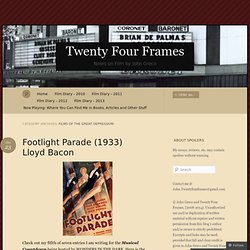

Charlie Chaplin - About the Actor. Charlie Chaplin was one of the greatest and widely loved silent movie stars.

From “Easy Street” (1917) to “Modern Times” (1936), he made many of the funniest and most popular films of his time. He was best known for his character, the naive and lovable Little Tramp. The Little Tramp, a well meaning man in a raggedy suit with cane, always found himself wobbling into awkward situations and miraculously wobbling away. More than any other figure, it is this kind-hearted character that we associate with the time before the talkies. Born in London in 1889, Chaplin first visited America with a theater company in 1907.
Chaplin’s slapstick acrobatics made him famous, but the subtleties of his acting made him great. Chaplin was known as one of the most demanding men in Hollywood. Chaplin typically improvised his story in front of the camera with only a basic framework of a script. Though Chaplin is of the silent movie era, we see his achievements carried through in the films of today. Charlie Chaplin- Table Ballet. Hollywood in the Depression. As unemployment reached an all time high in 1933, this decade, sandwiched between the roaring twenties and World War II, left little to be highlighted other than the dismal consequences of the Great Depression.

From failed farmers to discouraged businessmen to working mothers to displaced children, the Depression between 1929 and 1939 invaded homes across the nation. Twenty-five percent of the country was unemployed at the peak of the Depression in 1933 while even more just barely made ends meet. Despite the excruciating economic hardship faced by nearly all of the country, 60-70 million Americans still packed into theaters each week. This phenomenon forces the question: Why go to a movie during such a troubled time? What made sitting in a theater for an hour and a half worth a hard-earned 15 cents? First, to answer these questions we must understand the relationship between the audience, the society, and the film industry.
. | Musicals in the Depression | Films of the Great Depression « Twenty Four Frames. Despite an upbeat ending “Wild Boys of the Road” is one of the darkest, bleakest films of the depression era.

William Wellman already had a reputation for going straight to the vein, literary, as in his previous film “Heroes for Sale” and for not beating around the bush. While films like “Gold Diggers of 1933” dealt with the depression, it was mostly light hearted and escapist. “You get no such relief in this 1933 hard core pre-code drama. Living through The Great Depression was tough for many; there were thousands and thousands of dispossessed youngsters riding the boxcars and living in shantytowns. Wellman, or as he was known “Wild Bill” Wellman was a tough son of a bitch yet he worked within the studio system fighting for good scripts.
Historical Context: Movies in the Great Depression. Photograph 1939 by Russell Lee.

Theater in Waco, Texas Like other industries, Hollywood was hit hard by the Depression, but managed to recoup its profits through a variety of methods. One favorite way of attracting patrons was to offer sweepstakes and drawings at the theater for prize money. Even the promise of just a little bit of money was a big draw for impoverished Americans. At an average price of $.27 a ticket, movies offered a relatively inexpensive way to vacation from reality.
Audiences gloried in spectacular fantasies of high society and easy living that they would never know. Another symptom of this fascination was the Society Papers. These pictures also offered a kind of cultural escape valve: a safe battleground on which to explore serious issues like class under a comedic (and non-threatening) framework. Beginning in 1921, individual distributors throughout the nation began cut the films to conform to their state's particular ideas of censorship. Works Cited. Movie Stars of the 1930's. The Myrna Loy Center for the Performing and Media Arts.